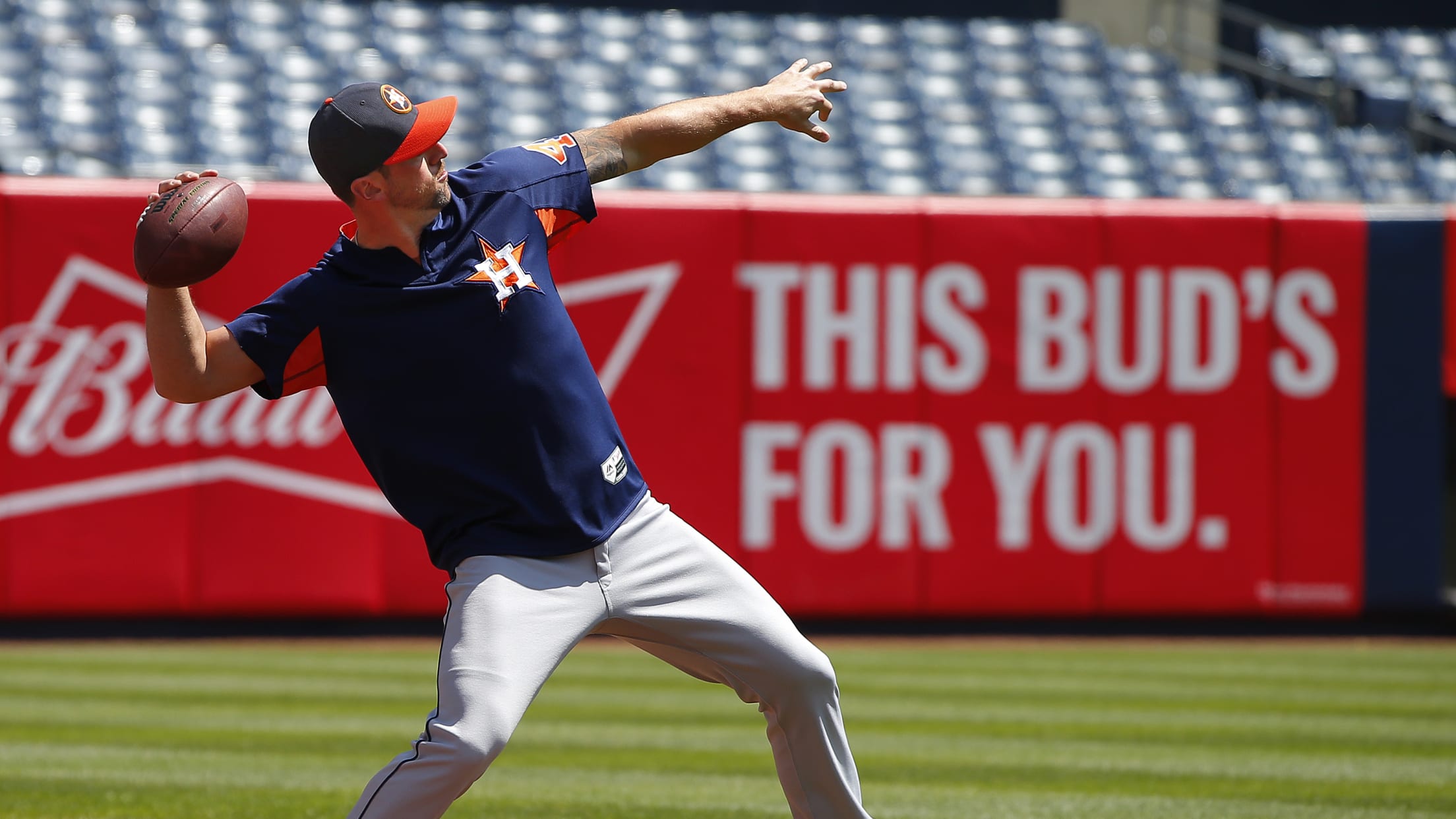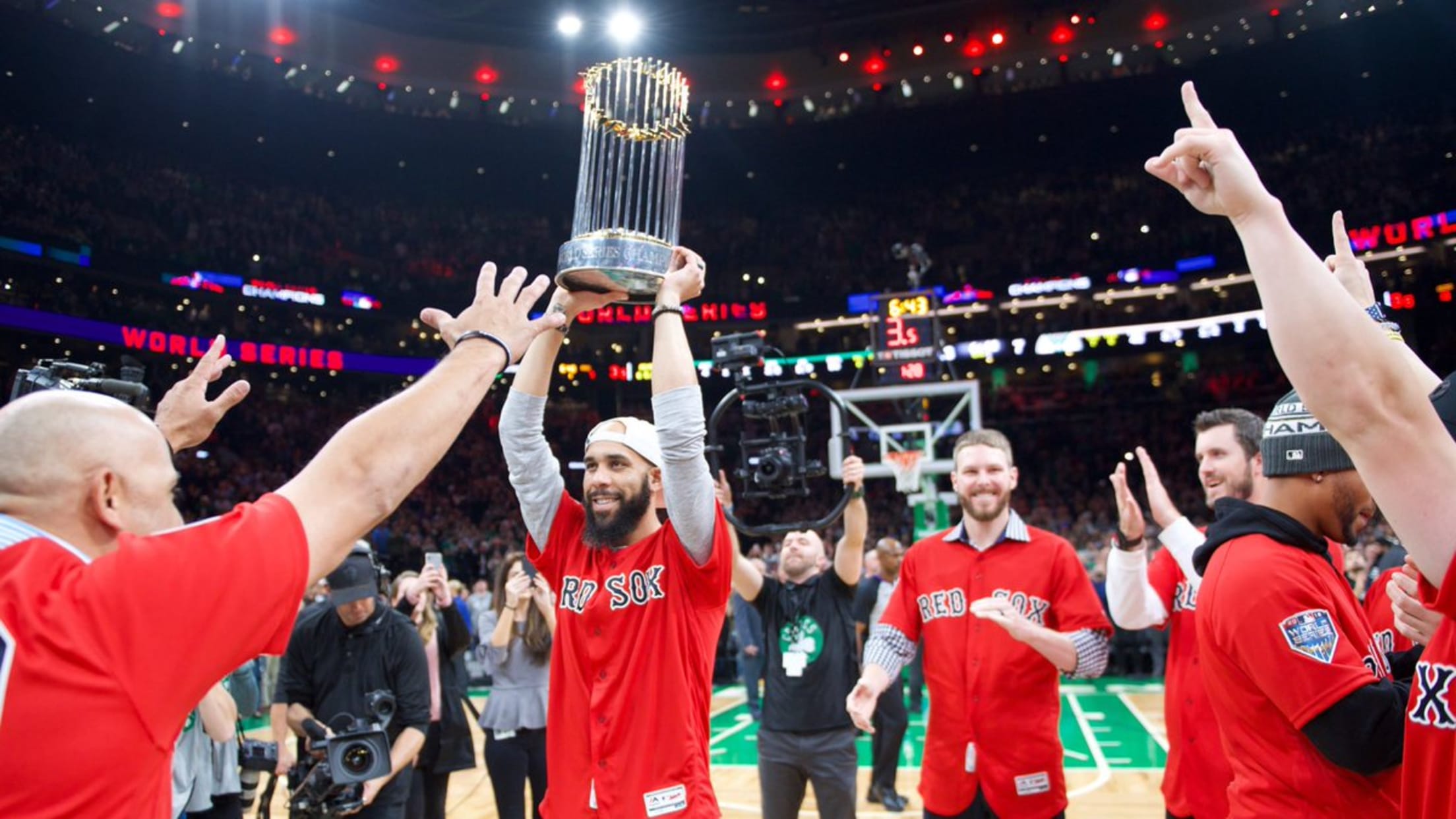The crazy rules baseball could adopt from other sports

The annual GM Meetings, when the heads of each ballclub convene for frank discussions and (presumably) cocktail shrimp, recently took place. And while no rules changes like pitch clocks or reliever limits were imposed, they were definitely discussed. So, while everyone will spend the winter thinking over potential tweaks to the game, I have a new idea: Let's look to other sports.
After all, each sport has its own unique rules and regulations that could point a finger toward interesting baseball innovation. Sound sacrilegious? Sure. But let's look at the options, anyway.
Hockey: The Empty Net
In the dying moments of an NHL game, the losing team will often pull their goalie to put an extra attacker on the ice. It creates plenty of drama, as the losing team goes all out for the victory knowing full well that one well-placed clearance will put the game out of reach.
Baseball could do the same.
In 2018, 48 different position players took the mound. While a handful came in the very, very late extra innings when the entire bullpen had been used up, more often they were brought in during blowouts. Instead of acting as a humorous white flag and a signal to head to the exits, why don't we introduce a little strategy to the situation?
Bring a position player in and your team will get four outs in your next trip to the plate. Sure, your position-player hurler will probably give up more runs than you're able to earn back, but the point is maybe they won't. Since you're sacrificing your best pitching options for a position player, you now earn at least one extra batter in the bottom half of the inning.
All of a sudden, a huge market for guys like
Basketball: Defensive three-second violation
To keep defenses from clogging up the area directly in front of the basket and preventing teams from driving to the hoop, the NBA created the defensive three-second violation in 2001-02. Basically, any defensive player not "actively guarding" a player can't spend more than three consecutive seconds in the paint. The penalty for such a call is a technical foul and a free throw.
With baseball debating whether to outlaw shifts, this could be the answer.
Instead of a blanket outlaw on shifting, teams would now be allowed to shift for three pitches during each at-bat. After that, the defense has to reset to the standard formation we're all used to.
Teams would have to choose: Should we start the at-bat in the shift, or do we think the batter is going to take a few pitches before putting the ball in play?
Soccer: Name an 18-man game roster
In most professional soccer leagues, you can have a "registered" squad (meaning players eligible for play) of about 23-25 players -- basically the size of a big league roster. However, before every game, teams have to name an 18-man squad of players eligible for that day.
Rather than put a specific limit on the number of relievers a team could use in a single game, now teams would have to cap how many potential options they could choose from. Sure, maybe some teams will decide "We need nine relievers and won't carry a single extra bat," but others may decide to opt for a different tactic.
Of course, this one wouldn't be a huge difference as teams plan on resting their four starting pitchers barring a crazy game and at least one or two relievers having planned off-days. But it would probably make a few clubs think twice before using another arm for a single batter.
Aussie Rules Football: Scoring system
Aussie Rules Football has a unique approach to scoring. There are four goal posts and if the ball is kicked between the middle posts, you get six points. If it's kicked between the middle post and back post, or if you carry the ball over the scoring line, you get one. Basically, you get a bonus for a difficult play.
Boom: Time to bring that to baseball. Hit a home run over 480 feet? Enjoy an extra run. Hit the bull? Don't just win a steak, but get a few more runs thrown in for good measure. Maybe teams could even introduce a giant Plinko board. If your home run hits the machine, you have to wait to see where the ball will land before you know how many runs you get.
Insane? Yes. Fun? Impossibly so.
Football: Offensive and defensive teams
When you watch a football game, you can enjoy Tom Brady tossing some touchdowns, but you don't have to worry about him getting burned while covering wide recievers. J.J. Watt can rush down passers, but never needs to catch a ball out in the field.
So, why doesn't baseball consider a similar solution? Instead of a single designated hitter, how about nine of them? And then, when it's time to take the field, let the lumbering sluggers put their feet up and an entire squad of Jose Iglesias-type defensive wunderkinds take the field.
It may sound crazy, but the players union would probably love it given that the number of jobs would basically double.
Hockey: The penalty box
And, finally, one more rule we'll pull from the ice: The penalty box. Break a rule in hockey and you're leaving the ice for a few minutes. What if baseball had the same?
Rather than letting all of those little rules violations slide by -- an accidental spike while sliding into the bag, a runner interfering with the ball, a pitcher who needs a warning -- now they'll head to the penalty box. Depending on the severity of the incident, the defensive team could be short a player for just one batter up to one full inning.
Just imagine the madcap action once a team loses its shortstop for a few outs and has to decide if it wants to let a bunch of grounders sneak through by playing a three-man infield, or if it wants to risk a series of inside-the-park homers by shortening up in the outfield.







